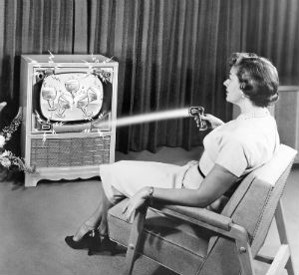Yesterday, Steve Marshall, Senior Vice President at Greenlight VR, was invited to present as a featured speaker at the Virtual Reality Summit in NYC. His presentation focused on assessing the current growth and development of the VR industry from a business perspective. Here are the 3 of the main takeaways from the session:
1. VR is Not the Latest Video Format

While it may seem like a logical progression to view virtual reality as the latest development of current video technology and thus compare its potential to that of 3D TV, VR is actually very much a different medium entirely. The two formats, planar video and virtual reality, differ greatly in the amount of control the content creator has in directing the viewer's attention. This alone distinguishes the two types of media. While telling a mediated story already works very well in planar video, having more immersive and interactive experiences works much better in VR. Many professionals in film and entertainment have actually turned down the prospect of VR because of its incompatibility with the way they've been formally trained over the past few decades. Various techniques to command viewers' attention in traditional video (intentional cuts, types of shots) simply don't work in VR when the viewer has full freedom to look wherever they want. Thus, VR will reap the benefit of developing in and for an entirely new market.
2. VR Mash Ups Might Be the Most Convincing of the Medium's Potential

Right now, many of the developers in the VR space are small, young, and under-capitalized. As a result, much of the VR content that is publicized is made up of big studio games and films. However, much of the long-time success of the VR industry will be up to the ideas presented by those smaller independent developers. Among them are plans to use VR to create experiences for religion, science, activism, art, and basically anything that could benefit from a new technological perspective. These ideas, while ambitious for the current state of VR development, will be key to integrating VR into daily life in the future.
3. VR Isn't Quite Mainstream...Yet

Despite the current media hype around virtual reality, given that content is what will drive the medium's success, the VR revolution, while imminent, is not upon us quite yet. If content is king for VR, then the limiting factor is not only the ability to manufacture high-powered HMDs but more so the ability for developers to create engaging content and PC/Mobile manufacturers to create hardware to run that content. Some developers have said they don't see VR/AR's "tipping point" in growth to occur until 2-3 years down the road, which may be a bit optimistic compared to our prediction closer to 6-8 years. Regardless, what this means is developers are confident in the space and there is reason to be excited, but in 2016 it's not likely the majority of the world see a drastic change in the way we consume content on our computers, phones, and gaming consoles.

